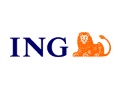USD: Some benefits from new energy-related tensions Markets were shaken yesterday by Russia’s surprise request to countries it considers as “unfrien

USD: Some benefits from new energy-related tensions
Markets were shaken yesterday by Russia’s surprise request to countries it considers as “unfriendly” (the EU, the US and the UK are included) to pay for energy exports in roubles. That sent gas prices sharply higher after an extended downtrend and weighed on global risk sentiment. Multiple reports suggest that EU countries are nearing a deal to reduce their dependence on Russian energy exports. In FX, we saw similar dynamics we witnessed early on in the Ukraine war notably commodity currencies (NOK and $-bloc) rising, European currencies dropping.
The dollar stood in the middle, rising against the low yielders and falling against commodity FX. In our view, the dollar’s strength against the likes of JPY and EUR is warranted not only by the repricing higher in energy commodities but also by diverging monetary policy expectations. We have a few more Fed speakers today as markets fully price in a 50bp move (followed by a 25bp hike) in either May or June, and we see a non-negligible risk that investors will start buying into the view of two back-to-back 50bp hikes in the next two meetings.
The US data calendar includes durable goods orders and some activity surveys today, but the focus will likely remain on developments in the Russia-NATO countries’ discussions over energy export payments and the plan to reduce dependence on Russian gas, all of which flags considerable upside risk to energy prices.
EUR: A move to 1.0900 on the cards
We think downside risks should prevail today for EUR/USD, given the resurgence of Russia-related risk premium on energy prices and the longer-term policy divergence/growth story. Data-wise, we’ll take a look at the eurozone’s PMIs, which may have weakened on the back of geopolitical events and high energy costs. While the FX impact should not be sizeable, it will likely endorse the market’s recent repricing of the eurozone’s growth expectations. In terms of central bank speakers, we’ll hear from Executive Board member Isabel Schnabel, one of the most hawkish voices of the ECB.
We still expect a move to 1.0900 in EUR/USD by the end of the week, with any decision among EU countries to reduce exposure to Russian commodities that could weigh on the common currency.
Elsewhere in Europe, the SNB announces monetary policy. Any changes to the current stance or hints at an imminent (ECB-style) hawkish turn appear unlikely. For once, the SNB is likely welcoming a stronger franc as a tool to tamper with exported inflationary pressures, which should continue to warrant a more relaxed stance on FX interventions. We expect the impact on CHF from today’s meeting to be quite negligible, and a re-worsening of the risk environment in Europe could bring EUR/CHF back in the 1.00/1.02 area.
GBP: EUR/GBP still looks headed below 0.8300
Sterling weakened more than its peers yesterday despite an above consensus UK CPI read as markets likely perceived the measures included by Chancellor Sunak in the “mini-Budget” will fall short of providing enough support to consumers amid sharply rising living costs. Despite a small rebound, we still see a move in EUR/GBP below 0.8300 as likely in the near term given policy divergence and the euro’s greater exposure to fresh Russia-related downside risks.
On the data side, PMIs will be in focus also in the UK today, and like in the rest of Europe, we should see indications that the war in Ukraine and high energy prices have worsened the economic outlook in the country. BoE’s Catherine Mann is the only noteworthy central bank speaker in the calendar today.
NOK: Norges Bank to hike and review rate path higher
Norges Bank is highly likely to follow up on recent hawkish communication and hike interest rates by another 25bp at today’s meeting. The move is fully priced in and should have no impact on NOK, as all the focus will be on the updated rate-path projections. As discussed in our Norges Bank preview, we expect the new projections to signal rate rises at each of the remaining quarters, with risks skewed towards more hikes rather than fewer.
Incidentally, we think there’s a non-negligible risk that the NB will raise the projected terminal rate to 2.25% or higher, and considering that the markets are pricing slightly less than 2% as a terminal rate at the moment, there is room for a hawkish surprise. All this suggests that the risks are skewed to the upside for NOK, although external drivers should once again prevail. With the EU taking steps to reduce exposure to Russian gas, Norway’s energy exports are likely going to emerge as the major alternative: in our view, the current environment fully warrants a break below 9.50 in EUR/NOK, with the next key support at the 9.4130 2018 lows.
Source: ING
www.hellenicshippingnews.com
